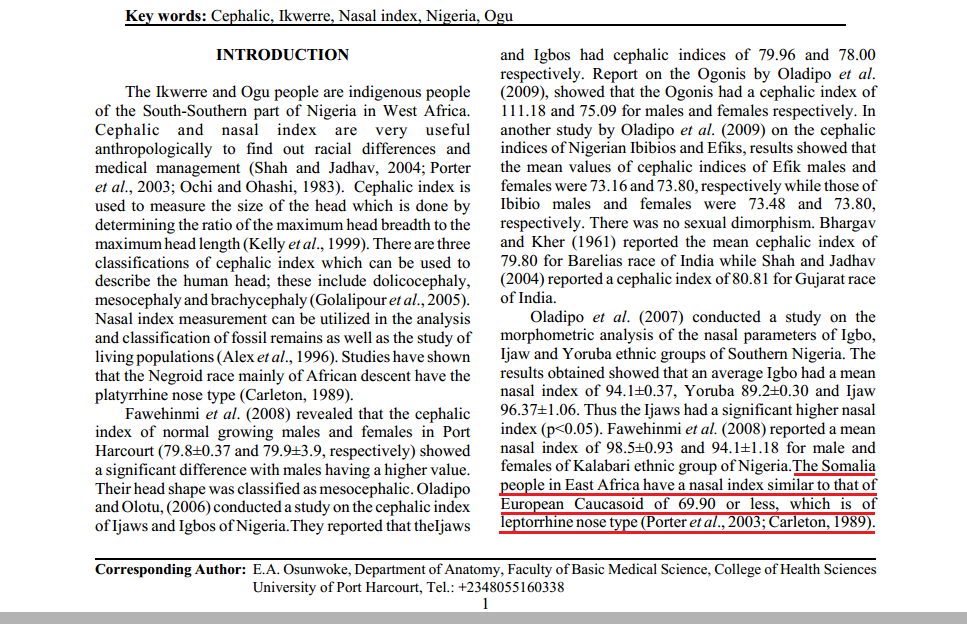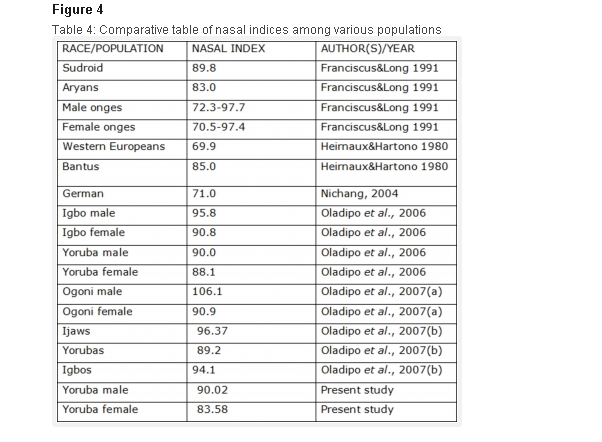http://maxwellsci.com/print/crjbs/v4-1-3.pdf
“Cephalic and nasal index are very useful anthropologically to find out racial differences and medical management (Shah and Jadhav, 2004; Porteret al., 2003; Ochi and Ohashi, 1983). Cephalic index is used to measure the size of the head which is done by determining the ratio of the maximum head breadth to the maximum head length (Kelly et al., 1999). There are three classifications of cephalic index which can be used to describe the human head; these include dolicocephaly, mesocephaly and brachycephaly (Golalipour et al., 2005). Nasal index measurement can be utilized in the analysis and classification of fossil remains as well as the study of living populations (Alex et al., 1996). Studies have shown that the Negroid race mainly of African descent have the platyrrhine nose type (Carleton, 1989)[...]Oladipo et al. (2007) conducted a study on the morphometric analysis of the nasal parameters of Igbo, Ijaw and Yoruba ethnic groups of Southern Nigeria. The results obtained showed that an average Igbo had a mean nasal index of 94.1±0.37, Yoruba 89.2±0.30 and Ijaw 96.37±1.06. Thus the Ijaws had a significant higher nasal index (p less than 0.05). Fawehinmi et al. (2008) reported a mean nasal index of 98.5±0.93 and 94.1±1.18 for male and females of Kalabari ethnic group of Nigeria. The Somalia people in East Africa have a nasal index similar to that of European Caucasoid of 69.90 or less, which is of leptorrhine nose type (Porter et al., 2003; Carleton, 1989). The nasal index of African-American women is 79.70, Bantu speaking negroes and the bushmen of Africa as well as the Australoids of Australia are platyrrhine having a broad nose and a nasal index of 85.00 or more (Mulchand, 2004)”


